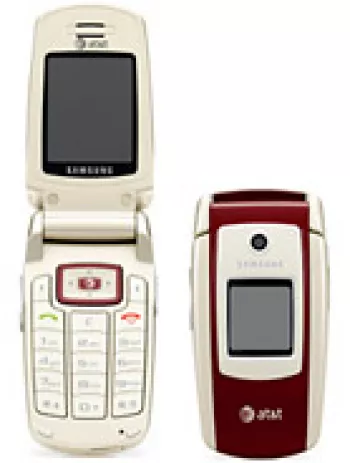
Design and Build
The Samsung SCH-B100 featured a design that was quite conventional for its time. Its dimensions measured 123 x 49 x 25 mm, making it relatively compact and easy to handle, despite weighing around 171 grams. This device sported a classic bar form factor, a popular style in the mid-2000s, which provided a solid grip and a robust feel.
Constructed with durable materials, the SCH-B100's exterior was designed to withstand the rigors of everyday use. The phone was available in a sleek silver color, contributing to its attractive aesthetic, which appealed to a broad range of consumers during its lifespan.
Display
The Samsung SCH-B100 featured a TFT color display that supported 256K colors, which was impressive at the time of its release. The display size was modest, with a resolution of 320 x 240 pixels in a 4:3 ratio, offering users decent clarity for the tasks the phone was designed to handle. While not groundbreaking, the display provided a satisfactory visual experience for users, particularly when browsing menus or viewing images.
Camera Capabilities
Equipped with a 1 MP single rear camera accompanied by an LED flash, the Samsung SCH-B100 made it possible for users to capture basic photos and videos. This functionality was relatively advanced for a phone released in the mid-2000s, offering video recording at 320p resolution. Although basic by modern standards, the inclusion of a camera added an extra layer of versatility, allowing users to capture moments on the go.
Performance and Hardware
The Samsung SCH-B100 operated as a feature phone, typical of its era, meaning its performance was optimized for basic tasks such as calling, texting, and handling short multimedia messages. The device was powered by a removable Li-Ion 1360 mAh battery, providing a decent power reserve with up to 280 hours of standby time and up to 4 hours of talk time.
The device supported expanded storage through an MMC slot, allowing users to store additional photos and media as needed. While specifics about the onboard RAM and processor are not detailed, the SCH-B100 was not designed to compete with smartphones on processing power, instead excelling in its ease of use for basic communication.
Network and Connectivity
The Samsung SCH-B100 offered CDMA2000 1x EV-DO connectivity, suitable for its release period, though it lacked support for a conventional cellular network. It came equipped with GPRS Class 10 capability but did not offer support for EDGE technology or any form of WLAN connectivity. The phone also excluded modern connectivity options like Bluetooth, GPS positioning, and radio, emphasizing its focus on fundamental mobile functions.
User Interface and Additional Features
The user interface of the Samsung SCH-B100 was straightforward, relying on a menu-driven environment typical of feature phones. It supported WAP 2.0/xHTML for basic internet browsing and handled messaging services such as SMS, MMS, and Email. Users could personalize their experience with downloadable polyphonic and MP3 ringtones, enhancing the device's appeal for those who valued customization.
The device did not support Java, limiting the scope of downloadable games and applications compared to Java-enabled peers. However, it did come with pre-installed games and allowed for additional downloads, providing users with light entertainment options.
Conclusion
Despite its discontinuation, the Samsung SCH-B100 holds a place in the history of mobile technology as an exemplar of feature phone design. Its robust design, basic camera functionality, and reliable battery life made it a solid choice for users seeking straightforward communication tools without the complexities of emerging smartphones. Today, the SCH-B100 stands as a testament to a time when mobile phones were primarily used for calls and texts, bridging the gap between basic voice communication and the upcoming multimedia capabilities of the smartphone era.
Main Features of Samsung SCH-B100
- TFT display with 256K colors
- Resolution of 320 x 240 pixels with a 4:3 ratio
- 1 MP main camera with LED flash
- Video capability at 320p
- MMC card slot for expandable memory
- Phonebook with photo call feature
- Supports SMS, MMS, and Email messaging
- Downloadable polyphonic and MP3 ringtones
- WAP 2.0/xHTML browser support
- Removable Li-Ion 1360 mAh battery
- Up to 280 hours standby time
- Up to 4 hours talk time
- Silver color variant
Disadvantages of Samsung SCH-B100
- No cellular connectivity for modern networks
- Lacks EDGE support
- No SIM card slot
- Heavy and bulky design at 171 g
- No Wi-Fi, Bluetooth, or GPS support
- No FM Radio feature
- Proprietary USB, limiting connectivity options
- No 3.5mm headphone jack
- No selfie camera
- No Java support for additional applications

View Also
More Phones
All Rights Reserved +14266 Phones © Mobilawy 2025

























